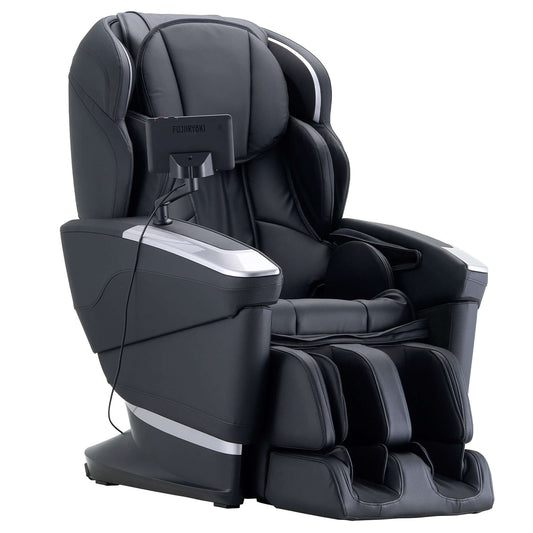
How Massage Chairs Work: A Comprehensive Guide
Unveiling the Inner Workings of a Massage Chair
In a world increasingly dominated by stress and physical discomfort, massage chairs have emerged as a sought-after solution for relaxation and pain relief. But how do these seemingly magical devices work? This article dives deep into the intricacies of massage chair mechanisms, providing a comprehensive understanding of their operation.
The Core Components: A Symphony of Technology
Massage chairs are sophisticated pieces of machinery that employ a combination of advanced technologies to replicate the techniques of a professional masseuse. Here are the key components that contribute to their functionality:
- Motors: The driving force behind massage chairs are powerful electric motors that control the movement of rollers, air bags, and other mechanisms. Different motors handle different functionalities, ensuring precision and flexibility.
- Rollers: These are the star performers of massage chairs, simulating the hands of a therapist. Rollers are typically made of durable materials like plastic or metal and are designed to traverse along the spine, back, and legs, kneading and rolling the muscles.
- Air Bags: Providing a gentle, encompassing pressure, air bags inflate and deflate rhythmically to mimic the effects of a compression massage. They are strategically placed throughout the chair to target specific muscle groups.
- Heating Elements: Many massage chairs incorporate heating elements, typically in the back and seat areas. These elements help to soothe muscles, improve circulation, and enhance relaxation.
- Sensors: To personalize the massage experience, some chairs incorporate sensors that detect the user's body shape and size. These sensors help to adjust the intensity and positioning of the massage for optimal comfort.
Massage Techniques: A Spectrum of Options
Modern massage chairs offer a wide range of massage techniques to cater to individual preferences and needs. Here are some of the most common techniques:
- Shiatsu: Based on traditional Japanese medicine, Shiatsu involves applying pressure to specific acupressure points to stimulate energy flow and promote healing. Massage chairs simulate this technique with targeted rolling and kneading movements.
- Swedish Massage: A gentle and relaxing technique, Swedish massage employs long strokes, kneading, and circular movements to relieve tension and improve circulation. Massage chairs can mimic these movements with their rollers and air bags.
- Deep Tissue Massage: Targeting deeper layers of muscle, deep tissue massage helps to release chronic tension and pain. Some massage chairs offer deep tissue settings with intense rolling and kneading to address this need.
- Kneading: Similar to the action of a human hand, kneading movements involve compressing and releasing the muscles to stimulate circulation and relieve muscle tightness. Massage chairs with dedicated kneading rollers effectively replicate this technique.
- Tapping: This technique involves rapid, percussive strokes that help to loosen up muscles and stimulate circulation. Massage chairs may feature tapping functions that are achieved by using rollers or air bags to tap rhythmically on the body.
Beyond Basic Functionality: Advanced Features
Beyond the core mechanisms, advanced massage chairs boast a host of features designed to enhance the user experience and provide personalized benefits:
- Zero Gravity Recline: Inspired by NASA technology, zero gravity recline positions the user in a way that reduces stress on the spine and enhances blood circulation. This feature provides ultimate comfort and relaxation.
- Foot Massage: Many massage chairs include dedicated foot massagers that employ rolling, kneading, and air pressure to relieve foot fatigue and improve circulation.
- Adjustable Intensity: Advanced massage chairs allow users to customize the intensity of the massage to suit their individual needs and tolerance levels.
- Pre-Programmed Massage Cycles: Many chairs come equipped with pre-programmed massage cycles designed for specific purposes, such as relaxation, pain relief, or sports recovery.
- Bluetooth Connectivity: Some massage chairs offer Bluetooth connectivity, allowing users to control the chair, play music, or even make phone calls hands-free.
Choosing the Right Massage Chair: Key Considerations
With such a vast range of massage chairs available, choosing the right one can be overwhelming. Here are some factors to consider:
- Budget: Massage chairs come in a wide price range, from affordable models to high-end luxury options. Determine a budget that aligns with your needs and preferences.
- Massage Techniques: Consider the specific massage techniques you are looking for and ensure the chair offers those options.
- Features: Identify the additional features that are important to you, such as zero gravity recline, foot massage, or heating elements.
- Size and Design: Make sure the chair is the right size and fits comfortably in your home.
- User Reviews: Read reviews from other users to gain insights into the pros and cons of different massage chairs.
Conclusion: Embracing the Benefits of Massage Chairs
Massage chairs offer a convenient and effective way to experience the benefits of massage therapy in the comfort of your own home. Understanding how these devices work allows you to make an informed decision about the right massage chair for your needs. By carefully considering the key components, massage techniques, and advanced features, you can select a chair that promotes relaxation, reduces stress, and enhances your overall well-being.


















